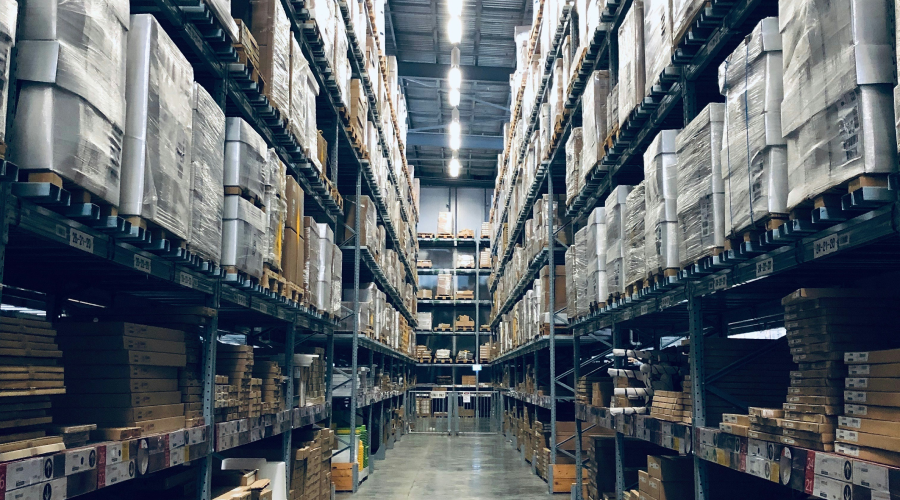What is e-commerce Warehousing? The storage of physical items before they are sold online is referred to as e-commerce warehousing.
Warehousing entails not just storing products safely and securely but also keeping track of where they are, when they arrived, how long they’ve been in stock and the quantity on hand at any given time.
As an e-commerce merchant, warehousing and shipping are vital components of your operation.
However, while you don’t need a PhD in logistics to set up an e-commerce storage and order fulfilment centre for your e-commerce business, it does involve some preparation if you want your business to run well.
This is your “ultimate guide” to achieving that goal.
Customer satisfaction and return rates are influenced by order accuracy and timeliness (returns being wasted money, of course).
The square footage you need to lease, insure, and maintain is affected by efficiency in putaway and storage. But none of this will be possible if your e-commerce warehouse isn’t correctly set up, to begin with.
We’ve identified these crucial steps for setting up and managing a solid e-commerce warehouse.
Tips for Managing an E-commerce Warehouse
Managing an e-commerce warehouse is a full-time job in and of itself. You probably already know how tough it is to handle warehousing independently, especially as your store grows. You will find these tips incredibly helpful.
1. Determine the Amount of Warehouse Space Required
The first step in warehouse planning is to ask yourself, “How much warehouse space do I require?” Calculate how many pallets and cartons you plan to carry at any given time, then multiply by the typical pallet or carton footprint.
It’s okay if this figure considerably surpasses the size of your entire warehouse. Remember that you’ll be using storage and shelving solutions to get the most out of your total area; thus, your storage space should be determined in cubic feet.
It would help if you also considered that you would need room for the following activities:
- Keeping things in storage (plan on extra storage space to anticipate growth)
- Receiving (including unloading, quality control checks, and labelling)
- Returns and “dead” merchandise have their section.
- Forward staging (make sure there’s enough room for at least one day’s worth of orders)
- Shipping or Dispatch (including not just packing and shipping, but also quality control, labelling, and breaking down larger pallets)
- Additional spaces for whole staging, value-added operations, and so on, depending on size.
2. In Warehouse Management, Organization is Crucial
The way you organize your warehouse has an impact on almost every other part of your business. If you do it correctly, you will experience the benefits in all of your daily operations. It’s critical to create a structure of organisation that works for your company.
Here are a few tips below:
- Keep your fast-moving items in easy-to-reach locations.
- Products that are usually purchased in bundles should be placed close together.
- Stock similar products to what you’d find in a grocery store – you don’t head to the bread aisle if you’re shopping for milk.
3. Create Warehouse Policies
It’s time to start drafting warehouse policies and procedures for your employees at this point. Pick pathways are only the beginning: you must also think about safety procedures, workflow, and quality control/order correctness.
Safety procedures: Now is the moment to write down the safety procedures that personnel must follow. We don’t think you should reinvent the wheel here: download OSHA’s Pocket Guide Worker Safety Series for warehouses and implement its suggestions to the letter.
But don’t stop there. Make a brochure outlining your policies. Put these policies in place, then make them public. You should, for example, post notices in strategic locations to encourage employees to utilise the correct safety equipment (gloves, back braces, hard hats, etc.).
4. Invest in the Best Warehouse Management Software Available
It’s one thing for a warehouse in business for 50 years to still employ spreadsheets, paper order forms, and other old-fashioned methods. But what about when it comes to establishing a new warehouse?
There is no reason to operate without a sophisticated warehouse management system.
In this category, there are numerous options available at various price points and with multiple capabilities. However, there are a few fundamentals you should check for:
- Receiving and inventory control of inbound goods (“door-to-door”)
- Workflow management for pick/pack/ship (with directed, optimised workflows and schedule plans)
- Reports created by the user (reflecting your own KPIs)
- Crucial alerts
- APIs provide for simple integration.
- Scalability
5. Learn from Your Mistakes, Others Too
It’s uncommon to have a faultless e-commerce warehouse setup from the outset. Even if everything seems to be going well at first, things might change.
Because of new products, technologies, and business models, what worked a few years ago may no longer be effective today.
Be honest about your mistakes and strive to learn from them. Almost every great businessperson has stated that “failing fast” and learning from mistakes is one of the secrets to their success.
You, on the other hand, can do better. You can benefit from the experience of others. Make necessary corrections and avoid making the same mistakes as others.
6. Secure Your Warehouse
It is critical for your peace of mind and bottom line to ensure that your staff are safe. Accidents in the warehouse might result in the loss of trained employees as well as legal action.
Forklift operating appears to be an area that requires constant training and updating.
Every year, 20,000 workers in the United States are critically injured in forklift accidents. Make sure your forklift operators are well-trained and follow safety procedures.
7. Make a List of the Necessary Equipment
Depending on your merchandise, volume, and business model, warehouse equipment may or may not be necessary. Most e-commerce warehouses and fulfilment centres, on the other hand, have the same fundamental goals:
- Maximise space.
- Boost efficiency in the flow of goods.
- Improve visibility.
Do it all in a way that is safe for people and your products.
Based on warehouse functions, we may divide warehouse equipment into four categories:
- Storage equipment: Everything from enormous warehouse shelves and racks to little bins and drawers falls under the category of storage equipment.
- Material Handling Equipment: Transport equipment, unit load equipment, storage equipment, and positioning equipment are all examples of material handling equipment.
- Packing and Shipping Equipment: This includes everything you’ll need to assemble, package, and label orders before they can be shipped.
- Barcoding Equipment/Inventory Management Software: These items deserve their category in today’s modern warehouse. Barcode scanners, printers, labels, and related e-commerce software are all included in barcoding equipment.
8. Look for Ways to Automate Routine Tasks
Automation is a sure-fire approach to boost productivity.
Through automation, a customised e-commerce website already makes the browsing and purchasing process considerably more efficient. Why not apply the same logic to your e-commerce warehouse’s product processing and shipping?
Even better, automating your warehouse does not have to be a significant overhaul. The best automation focuses on small investments in single-task machines.
Examples of Automation machines:
- Bar-code scanners can aid with streamlining picking and improve accuracy by eliminating cycle counts.
- A conveyor belt can safely transport heavy containers from one location to another, eliminating the need for staff to handle merchandise and thereby reducing strain. If using a conveyor belt isn’t an option, lift trucks and pallet jacks can help.
- A laser DIM-weight scanner can determine shipments’ measurements automatically, ensuring precision and speeding up the shipping procedure.
- Machines that perform mundane, repetitive operations, such as dismantling pallets or boxes, can save time and reduce repetitive stress.
9. Quickly Process Incoming Stock
When you get an incoming delivery, make sure to verify it right away. Any order management concerns will be resolved faster if you are informed of any broken items or shortages as soon as possible.
It’s also critical to promptly store arriving products. If you don’t, that stock will show up in your system as available but not on your warehouse shelves. When orders come through, this could set pickers on a wild goose chase.
10. Use Data to Inform Reordering Decisions
Your inventory data is the best predictor of how to manage future inventories efficiently.
This means you can figure out which products to reorder, when to reorder them, and how often to maintain them in your warehouse rotation by looking at previous purchase orders and sales data.
Purchasing is one of the most important and challenging duties in any retail business. You want to please your customers by offering products that fulfil their needs while also satisfying your company’s financial goals.
As a result, a purchasing department faces two important questions at any one time:
When should you place a new inventory order?
What is the ideal number of units to order?
Many businesses use a min/max reordering strategy to determine when to reorder. You can use a spreadsheet for smaller firms, but most organisations (regardless of size) use cloud-based inventory software because it has this feature.
Running an e-commerce firm and a warehouse does not have to be tough. To be organised and safe, keep the above recommendations in mind. Daalder provides you with the tools you need to manage inventory and run an e-commerce business of any size. Get in touch today to speak with our team!

